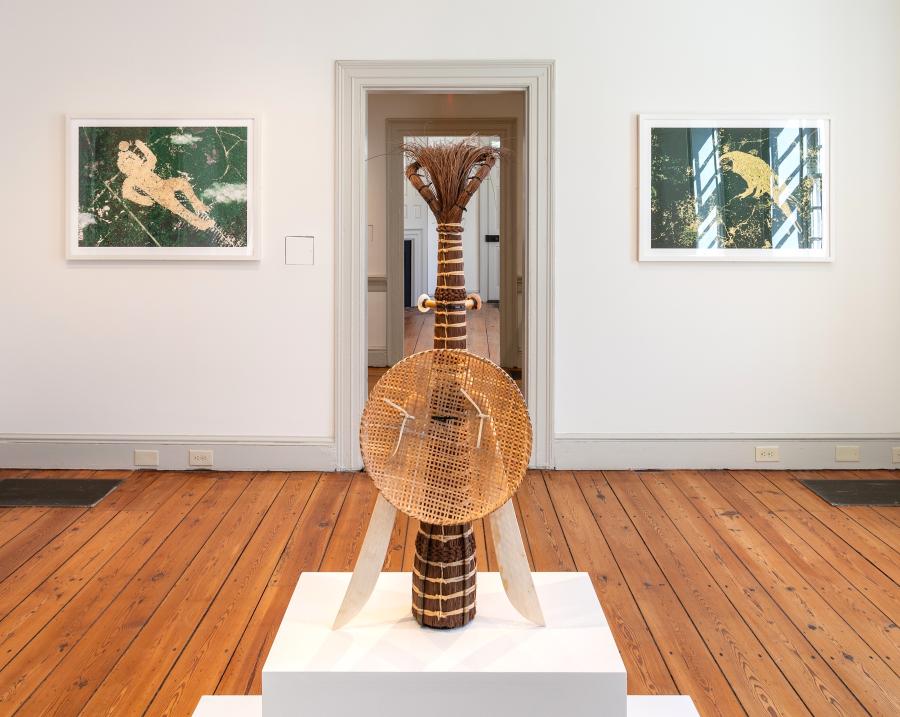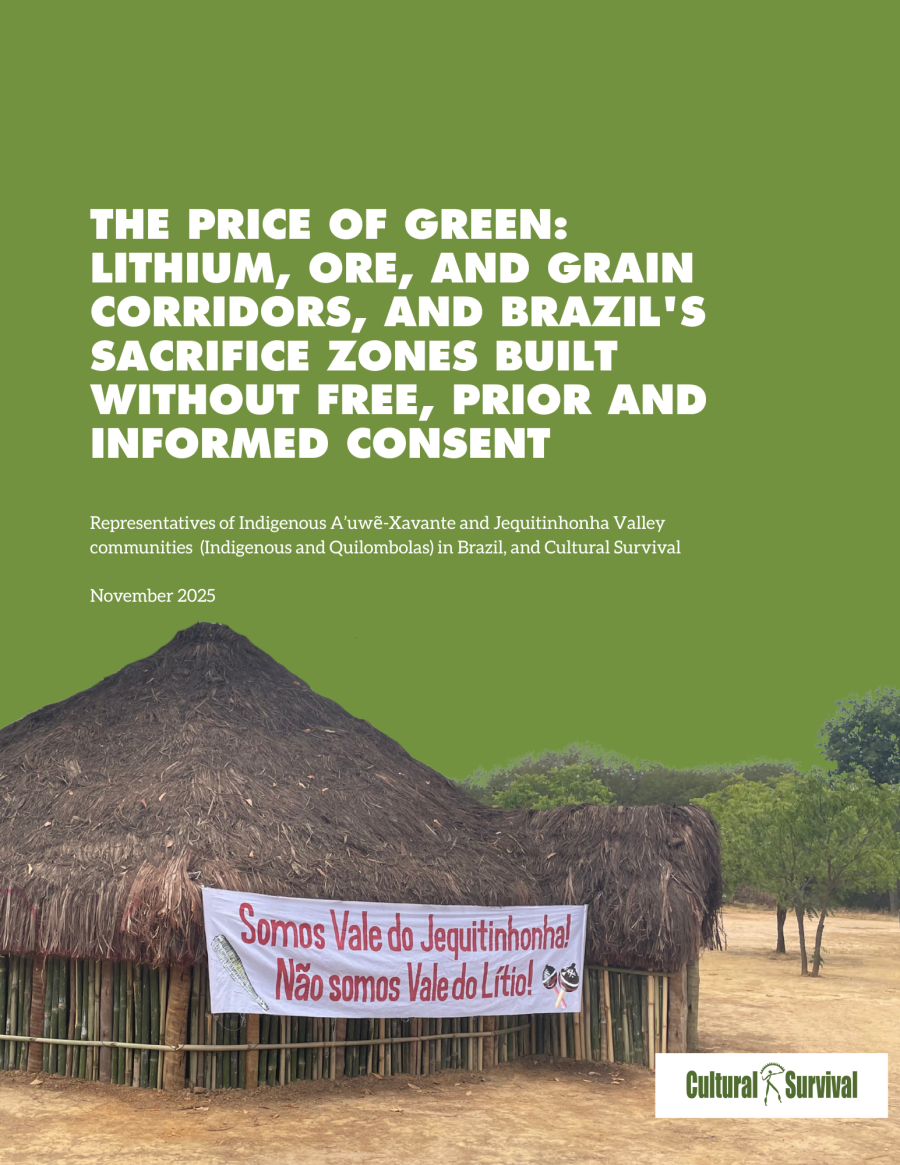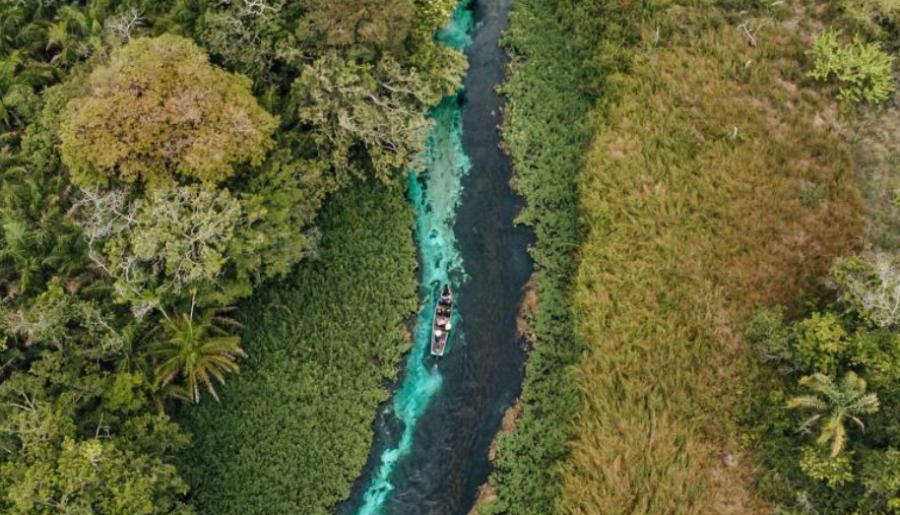Zoró Indians Prepare for War
The Zoró Indians today are living one of their most dramatic moments since establishing official contact with Brazilian society in 1977. The Indian territory interdicted by the Decree of the President of the Republic No. 81.587, on 19 April 1978, has been invaded by several thousand settlers responsible for the destruction of a large area of forest in the region. The Zoró, who number about 200, are determined to remove the invaders from their land. They are preparing themselves for a war that could have tragic consequences.
Since its establishment, the Zoró reserve had been the responsibility of the former Eighth Regional Office of FUNAI (National Indian Foundation), with headquarters in Porto Velho, Rondônia Administrative reform within FUNAI on 2 August, 1986, integrated the Zoró into the Aripuana Park which is subordinated to the FUNAI Regional Superintendent's office in Cuiabá, Mato Grosso. The state of tension in the Zoró area has dragged on since August 1985, when the Indians sent out a war party that captured three invaders and held them prisoner in the village for some days. This first act of war, meant as a warning, indicated a crisis in the region. After some months of relative quiet, during which they searched for a peaceful solution to the problem. Zoró warriors, armed with bows and arrows, are ready to attack.
On the other side of the conflict, settlers have appointed a lawyer who is petitioning to have 120,000 ha excluded from Zoró land. This land is already deforested and effectively occupied. Should such an exclusion occur, however, the consequences for the Zoró may serve as an example for new invasions in other indigenous areas of Brazil.
The Zoró and Their Contact with Brazilian Society
The Zoró Indians speak a language of the Monde family of the Tupi stock, similar to that of the Sururí, the Gaviao, the Cinta-Larga and the Arara. They inhabit an area in the extreme northwest of the state of Mato Grosso, not far from the Bolivian bolder (approximately 11°S, 61°W). The Zoró territory is only part of the traditional area used for hunting and gathering.
The first mention of the Zoró was in 1968 when the former Indian Protection Agency (SPI), during an overflight, registered the existence of some villages in the region. At this time colonists were already appearing in the Zoró area. Elder Zoró remember encounters in the forest with groups of white men who were looking for rubber and gold. On these occasions the Zoró surprised these groups who, for the most part, retreated in fright, leaving the Zoró their first metal objects.
Documentation of Zoró population has been contradictory. In 1976 the Zoró population was estimated at about 800. In 1978 FUNAI claimed to have vaccinated about 400 Indians, and claimed there were 15 villages. In 1980, however, the population was estimated at about 190 by anthropologists - a number corroborated by a FUNAI memo in 1985.
Recent, as yet unpublished, studies by anthropologists provide the only information about the Zoró. What is clear is that the Zoró, in the nine years since official contact, have lacked health care and have been subjected to heavy pressure to relinquish their culture.
The New Tribes Mission is a multinational organization of the Christian faith headquartered in the United States. Like similar organizations (e.g., the Summer Institute of Linguistics), they have as their objective the religious conversion of peoples in all corners of the planet. These Christian organizations, with their colonialist manner, grow increasingly more active in the Brazilian Amazon. They do not just interfere in the religious practice, but introduce a whole set of values, norms of conduct, moral principles and practices which disturb social life and destroy indigenous culture. The new beliefs and practices introduced by such organizations often result in the creation of local factions (believers vs. traditionalists) that prevent Indians from uniting to oppose a common threat. Since the time when missionaries began working with them, the Zoró have been progressively abandoning their rituals. Today the Zoró are crentes (believers); in their village is a little wooden church with a cross nailed to the root where the Zoró hold services on Sunday.
At the beginning of the 1980s the Zoró were transferred by FUNAI to a new area in the northwest of their territory. A program of forced collective cultivation required the population, traditionally characterized by hunting, gathering and individual cultivation, to work from sunrise to sunset each day. This new intolerance in Zoró society affected production, consumption and the daily routine of the group. At the same time, it limited traditional excursions into the forest.
Little by little, FUNAI promoted the substitution of one central village for the smaller, scattered villages. This new village was very different from the traditional big oval houses made from thatch which each contained a domestic group defined on the basis of the Zoró kinship and matrimonial practices. The new village, conceived by FUNAI agents, consisted of three straight lines of houses similar to those of colonists, lined up in parallel fashion, with "streets" between them. Each new house contained only one nuclear family, yet another value imposed on the Zoró. Thus today, with only nine years of contact, the Zoró village reminds one of any little town, with a church, streets, a pharmacy an airstrip a store, a radio station and even a "town hall' of sorts - the finest building of all - where FUNAI agents live, and from which are issued the orders that guarantee the "smooth functioning" of the new complex of village and communal fields. The Zoró are railed peons by the FUNAI agent, who, in this way, expresses with absolute clarity his conception of Indians and their proper role.
Since the soil of the Zoró territory is fertile and the Indians devoted much effort and care to it, there were soon results from the planting. The Zoró encountered something new: surplus production. Today there are still stocks of rice from the harvest of 1983, and apparently, at times, it has been necessary to burn off parts of the production due to lack of space in the storehouse. Zoró have a lot of food today, but it must be remembered that they produced sufficient food for centuries without any outside influences.
The new Zoró village is situated in the extreme northwest of the territory. At the end of the 1970s the president of FUNAI allowed the construction of a road that cuts the Zoró area from the south to the west in order to serve the interests of commercial groups in the region. At first, entry to the road was controlled by a gate installed at the border of the Zoró area. For the last few years, with the removal of the gate, the road has been wide open to settlers, who have established themselves over a vast part of the Indian territory. Although previously the Zoró would have patrolled their territory during hunting and gathering expeditions, this was curtailed by the program of communal fields which keeps them employed full time from Monday through Friday. Saturday is the only day free for individual activities, since Sundays are kept for religious services and praying to the white God as instructed by the missionaries.
In summary, FUNAI permitted the construction of a road on Zoró land, failed to exercise control over its borders and did nothing to impede the entry of thousands of invading colonists (there are some 2,500 to 5,000, according to surveys made in October 1986). At the same time, they imposed upon the Zoró a new type of social order that made it impossible for them to protect their own land. The New Tribes Mission taught them to be fearful of God, to practice virtue and to love their neighbors.
The Zoró Respond
A peaceful climate did not continue long in the new village. Little by little, they began to perceive that their gentle acceptance of the agents of God and State did not guarantee their social welfare. So it was that in August 1985, a group of Zoró warriors, armed with bows and arrows, organized a war party and captured three settlers. Those captured were released only after negotiations that required the participation of the regional FUNAI representative from Porto Velho, Rondônia, as well as the local FUNAI agent. The release of the captives depended essentially on a promise by FUNAI to remove all the other whites who were beginning to establish themselves on Zoró land.
A few months before, a report by FUNAI/INCRA/INTERMAT verified the presence of 79 invasions in the Zoró area. However, this survey was made during the rainy season, when the roads of the region become impassable and access to the area by road is very difficult. Consequently, during the rainy season, October to March, land takeovers are temporarily halted.
During the dry season, April to September, land invasions become feasible. After the dry season of 1985, the number of invasions grew from 79 to perhaps several hundred. This number increased to several thousand during the dry season of 1986. One town, Paradise do Serra, founded in Zoró territory, has two sawmills in operation and one being built, a bar, a restaurant, a school, rice-cleaning machinery, stills and offices of the Brazilian Forestry Institute and the State Secretary of Farming.
Zoró have learned that they must protect their land themselves. Their territory has not yet been surveyed, only interdicted by a decree from the time of the first contact. The FUNAI agent who had thought of himself as the "civilizer" of the Indians ended up prudently requesting a transfer to some distant post; the newspapers in Mato Gross, Brasilia, Rondônia and Rio de Janeiro have been warning for several months of the risk of armed conflict in the Zoró territory, which, if it occurs, will have dire consequences.
Since the beginning of September 1986, the Zoró, without hope that the invaders would leave their territory peacefully, began their ritual preparation for war. During that month a series of meetings between the Zoró and FUNAI managed to stall the violence. In early October, FUNAI closed the sawmills in Zoró territory, but at the same time, recognized the existence of 66 landholders with deeds to Zoró land, granted by the state of Mato Grosso. Since then, the situation has worsened between Zoró and settlers, and requests of the Zoró by FUNAI leaders to wait for a peaceful solution have been met by the response, "We don't believe in paper any more!".
Conclusion
Zoró land is still not legally demarcated. Decree 81.587 only interdicted it, setting it aside for later demarcation. The Geographical Service of the Army surveyed and marked the boundaries of Zoró territory at the end of 1985. It is now urgent that the Zoró reserve be ratified legally as such, which requires an act of the president of Brazil. It is also necessary to remove, as quickly and carefully as possible, the invaders on Zoró land. Some of these settler families went into the area in good faith and must be relocated to other areas where they can live in peace and work the land to make their living. One more time an Indian group runs the risk of disappearing from the map forever, and we watch their territory seized by those promoting an empty "progress" that only generates prosperity for a few.
Article copyright Cultural Survival, Inc.



